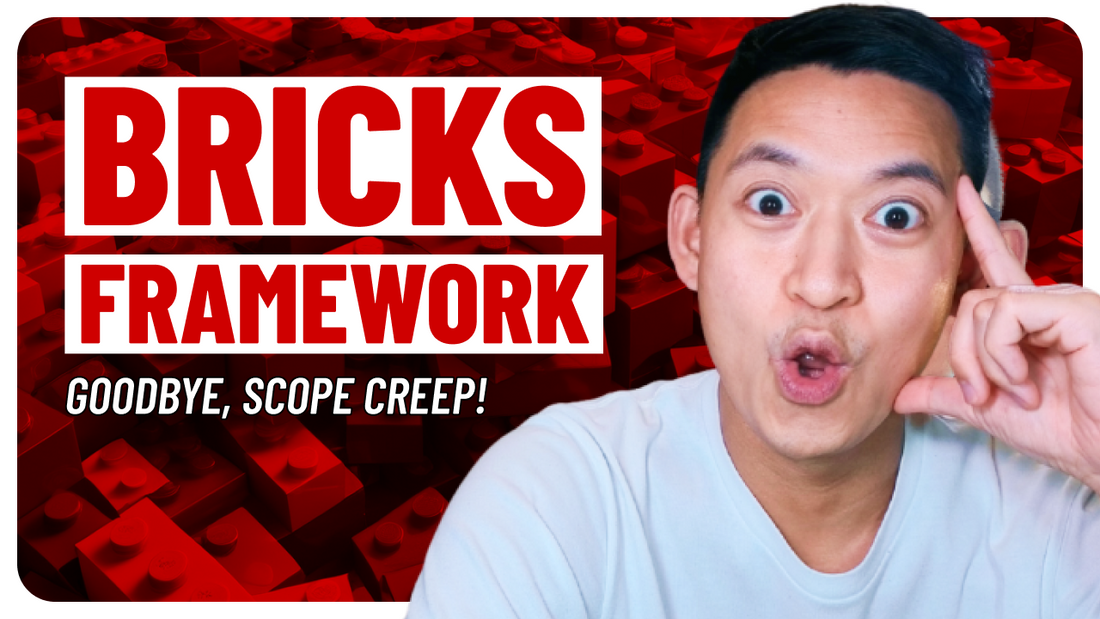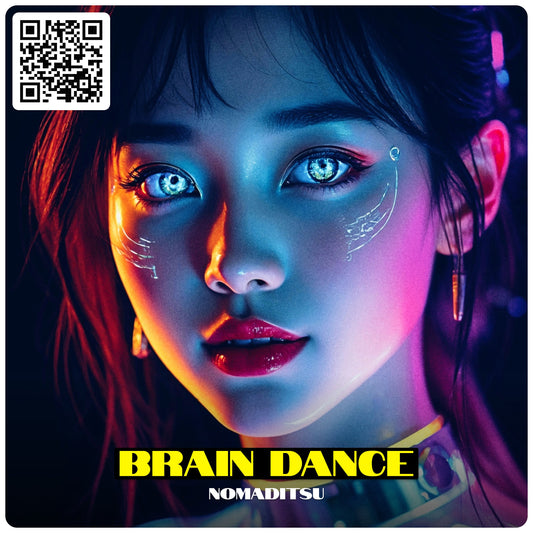

Video Description
Overview
Have you ever started a project full of excitement, only for it to spiral out of control? In this video, digital nomad and ADHD/perfectionist Ray shares the BRICKS Framework—a simple, step-by-step system to rein in scope creep and bring your ideas to completion.
Chapters
- 00:00 - Intro
- 01:00 - Hey, I'm Ray
- 01:34 - 1st Principles
- 02:31 - The Challenge
- 03:08 - Lego Metaphor
- 03:51 - The Aha Moment
- 05:26 - The BRICKS Framework
- 05:47 - B - Box
- 06:31 - R - Round Up
- 06:49 - I - Inlay
- 06:57 - C - Check
- 07:10 - K - Kompose
- 07:26 - S - Share
- 07:37 - Conclusion
- 08:21 - Outro
What You'll Discover
- The Lego metaphor that unlocks clearer communication
- Why choosing just 1 thing for your "idea box" cover is critical
- How the "Rule of 3" focuses your message
- A 6-step process to streamline ideas and ship projects
Who This Is For
Whether you're a creative professional or anyone struggling to finish what you start, this game-changing framework will help you communicate effectively and finally complete your masterpiece.
About Ray
Combining travel adventures across 30+ countries, a design career at top Canadian tech companies, and years navigating ADHD, perfectionism, and imposter syndrome, Ray now curates life hacks at Nomaditsu.com.
Links & Resources
Tags
- #productivity
- #ADHDtips
- #perfectionism
- #impostorsyndrome
- #projectmanagement
- #creativemind
- #neurodivergent
- #scopecreep
Transcript
Introduction
Has this ever happened to you where you have a vision for your project that you're fired up about? You get started thinking, "This is a great idea, I know exactly what to do, I'll be finished in no time." You actually make a lot of progress, but at some point, the project mysteriously starts to grow. Before you know it, the project has ballooned beyond anything you could have imagined, and the finish line is nowhere in sight. Despite your best efforts, you're exhausted and it seems there's no other option but to put your project on permanent pause.
Personal Story
I started this YouTube channel recently and was running into this exact same problem, no matter which idea I chose and no matter how simple and achievable it seemed. It would just grow into some unwieldy beast. I thought, is there a way to create a system—a framework—to attack this very problem and put an end to it? If you've ever struggled with this situation before, stick around because I feel like I've actually cracked the code on this one. The proof is that you're watching this right now.
About Ray
Hey, I'm Ray, minimalist digital nomad from Toronto, now enjoying the sights, sounds, and experiences of Bangkok, Thailand. Combining travel adventures across nearly 30 countries, a design career spanning two decades at some of Canada's top tech companies, and just as many years going toe-to-toe with ADHD, perfectionism, and impostor syndrome, I'm now curating the most essential life hacks, tools, and systems I've uncovered at Nomaditsu. If you're a fellow life optimizer, I'd love for you to join me on this journey by hitting subscribe and joining the newsletter in the link below. Now, on with the show!
Understanding Scope Creep
I'll be talking about scope creep from a communication perspective in these examples, but you'll see that it could be applied to projects as well. To solve this problem, I rewound to first principles. I had to ask: what exactly am I struggling with here? I determined it must be a failure of communication. It was like I was trapped inside my own head and couldn't get to the other side of communicating my message. At its core, communication is about getting an idea from one mind to another. Successful communication achieves that with near perfect accuracy. For example, I say "spaceship," and the spaceship you imagine is the same as what I was imagining. Unsuccessful communication is when the idea gets to you but it's distorted or doesn't get to you at all.
The Challenge
The challenge comes when we're trying to bring a project to a close but feel we need to keep adding relevant details. The problem is, we feel all the details are relevant. This desire comes from a good place—we fear that leaving out key details might do the audience a disservice. Unfortunately, this same impulse is what causes the project to spiral out of control, leaving the creator burnt out and potentially abandoning the project. But don't worry, there is a solution.
The Lego Metaphor & Aha Moment
I visualized communication with a metaphor: your idea can be represented as a Lego structure, and giving it to others is like giving them the same Lego set with instructions so they can rebuild the same structure in their own mind. The "aha" moment came when I realized that not settling on just one thing to put on the Lego box meant my project would keep growing—there were no boundaries or constraints. By choosing to put one thing on the box and remembering that picture, it makes it clear what the constraints are and makes it easy to decide what to add in and what to keep out.
The BRICKS Framework
This realization led me to develop the BRICKS Framework, which keeps a tight alignment to the Lego visual. It's a step-by-step process designed to streamline your workflow, keep you focused, and bring your projects to a successful close.
- B - Box: Choose just one main idea for your project or communication. This is the most crucial step for those who tend to scope creep.
- R - Round Up: Round up your three main points to support your main idea—the foundational blocks for your model.
- I - Inlay: Inlay your remaining points, just like adding the rest of your bricks to complete your structure.
- C - Check: Check all the points you've laid out to ensure they flow together seamlessly and are enough to communicate the overall idea—nothing more.
- K - Kompose: Compose your final draft based on all the points in your outline—think of this as writing the full instruction booklet for your Lego model.
- S - Share: Share your masterpiece and see people's eyes light up as they construct that beautiful idea for themselves.
Conclusion
By following the BRICKS Framework, you'll be able to rein in your infinite ideas, focus on what truly matters, and effectively deliver your message or project to your audience. Just like a Lego model on a store shelf, shipping a successful project or communication can benefit by adhering to a clear picture. The BRICKS Framework provides a tool to avoid the temptation to go overboard and keeps you focused on the original vision you wanted to deliver. Whether you're a creative professional or simply someone who wants to express themselves, the BRICKS Framework can help you communicate your message effectively and ensure your project sees the light of day.
Outro
If this helped you, hit the like button, subscribe, and share with a friend who could benefit. I'd love to hear your stories if you've implemented this—maybe your story could be featured in a future video. For a summary of this framework, subscribe to my Gumroad newsletter where I'll be sharing this and other future tools. All the links are in the description below. Thanks for listening—until next time, keep optimizing!



